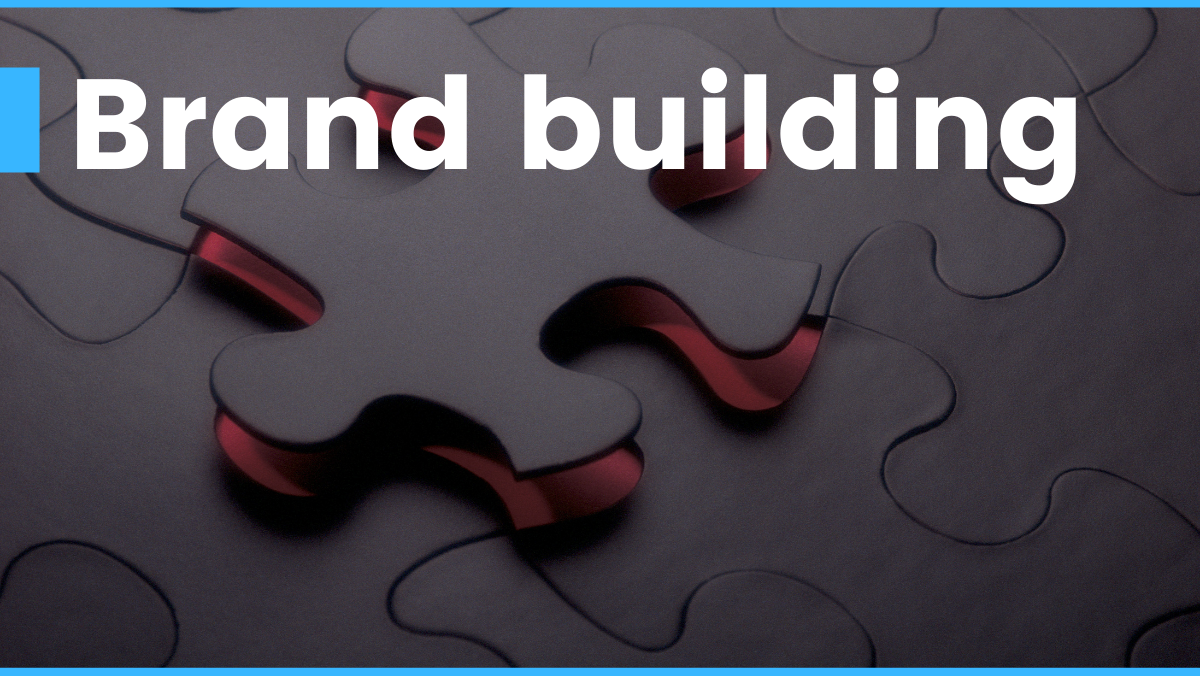For B2B, just like B2C, investing in both brand and short term tactical activity is a more effective strategy than the too familiar, narrow investment in performance marketing. Yet it seems to be getting harder to secure budget for brand building that delivers long term growth.
Why is brand building such a challenge?
Brand building is often seen as a cost rather than an investment isn’t it? Easy therefore to cut when budgets are under pressure. It takes investment over time to deliver long-term goals. But set against the pressure to deliver short-term sales and meet lead generation targets, it’s challenging to stand up and make a business case that convinces sales led management they should re-allocate more resources towards brand building. And create distinctive brand assets which enable you to become salient, memorable and consistent.
Instead, marketing has moved more and more towards focusing on short-term tactics and channel efficiency. The explosion of data, proliferation of martech and obsession with ROI further magnify the focus on ‘performance marketing’ and dashboards.
Which creates a situation where understanding how audiences perceive brands, and how their attitudes to brands change over time, becomes neglected.
Why is brand important?
Yet, successful brands are more successful businesses. As the following stats show, successful brands positively impact the bottom line, generating more revenue, profit and growth:
- Brand value represents on average 20% of a businesses market capitalisation (1).
- Strong brands deliver far greater shareholder growth than the average company. Kantar Millward Brown’s Brand Z portfolio increased 124.9% between 2006 & 20017 compared with the Standard & Poors 500 at +82.1% and the World Index at +34.9%. (2).
- Strong brands build price elasticity. High strength brands command a price premium 13% higher than low strength brands and 6% higher than average strength brands (3).
- To maximise effectiveness, brands should spend 60% of their budget on brand building and 40% on activation. Too little brand activity, and the equity needed to drive future revenue won’t accumulate (4).
- Of the total commercial impact marcomms make, 58% will be seen in the long term (6+ months), 42% in the short term (up to 6 months)(5).
For a business to grow successfully, addressing the situation to achieve a better balance between performance / activation and brand building has to move up the agenda.
What is a brand?
Firstly, every business has a brand. Whether conscious of it or not. And as we’ve just seen it directly affects how successful they are.
But what is it exactly? Well, It’s far more than a logo. A brand is the intangible, emotional relationship between an individual and a product or service, built from the sum of all expectations, experiences and feelings at every touchpoint.
And successful brands exceed the perception of their audience by consistently delivering positive experiences at every touchpoint to build trust and advocacy. The result is that successful brands are also more successful businesses. Their behaviour builds price elasticity, delivers more revenue, profit and growth.
Internally a strong brand provides clarity. Everyone understands what the business is trying to achieve, where it sits in the market, how it behaves and how it adds value. When everyone knows where the business is going, they’re motivated, pulling in the same direction to achieve the same goals. It becomes the framework that guides behaviour and shapes decision making, allowing a business to move forward.
When viewed in this context, brands are integral to long term success. And the need for a brand platform with a clear value proposition, positioning and identity becomes more compelling.
Build a distinctive brand identity.
To be successful you have to convince your audience that you answer their challenges and meet their needs. And you do that better than your competitors.
To establish a strong brand you need to know why you exist and how that’s invaluable for your audience. Ask yourself what impact does your business deliver? Why should your audience care about you? What value do you offer them?
Answering these questions gives you your reason why. Once you know your why, you can define your value proposition and develop a brand identity that brings your proposition to life.
How you look – your fonts, colour palette, visual style – and your tone of voice, the language you use, and your messaging should be developed with the singular purpose of creating a distinctive and clearly differentiated brand that engages people.
People who just happen to be decision makers. They’re still emotional beings and they still form emotive responses to what they see and hear. A distinctive style incorporating design cues carried through all your communications creates a visual shorthand for your audience that builds recognition and familiarity. Because there’s one thing marketers tend to forget. Your audience isn’t always in market when you spend your budget. So when that budget is spent, and there’s no activity, but your audience are in-market, you need them to remember you.
Likewise, your message should be compelling and motivate. It’s not about selling how great you are. To connect with your audience and build relationships, it’s about having a clear point of view. One that sets out who you are, conveys emotional intelligence and empathy and builds a narrative that communicates solutions based on business truths people identify with.
Be consistent.
But to build trust, generate loyalty and ultimately make your audience buy into you, it’s not only a distinct identity and your message that matter. Consistent delivery is vital. For people to connect with your brand they have to experience the same emotional reaction every time they interact with you. Being consistent in how you present your brand and how you speak aids recognition, maintains the quality and integrity of your brand’s image and increases its perceived value.
Without a strong, consistent identity the result is a series of disjointed messages with no shared thread. This creates uncertainty in the minds of your audience. They become confused about what they’ll get out of any relationship with you and you fail to connect.
Be creative.
And as much as we’d like to think they do, people don’t consume marketing materials. They’re busy, they only consume what interests them. To stimulate that interest, brands have to deliver marketing that’s memorable, motivating and truthful.
Before marketing plans are developed it’s about defining a powerful point of view communicated consistently in a distinct brand framework that people recognise, identify with and trust. Marketing that stands out from the competition through bringing a brand to life in a bold and confident way makes people stop in their tracks.
The key is to find those business truths your audience identifies with. Truly understand why your product or service is the one that’ll help them thrive. And consistently deliver a strong, differentiated brand that everyone within the organisation understands. And everyone outside the organisation recognises.
What can a strong brand achieve?
Because a strong brand has the power to influence individuals, create preference and embed behavioural change, brand building brings many benefits to an organisation. We’ve already seen some compelling stats. Lets finish with a reminder of what a strong brand delivers.
- Short term sales – would you buy now from a brand you know or a brand you don’t?
- Long term sales – many more customers are ‘out of market’ than ‘in market’ at any one time. You need mental availability for when those ‘out of market’ become ‘in market’.
- Price elasticity – strong brands command a price premium, and increasing price by 1% has a greater impact on profit than increasing sales by 1%
- Protection – product features & benefits can be copied. Sales activation tactics can be copied. Your brand allows you to create a distinctive proposition that sets you apart.
- Greater talent – it’s easier to attract talent if you’re a well known brand than if you aren’t.
- Category change – a strong brand will allow you to move into new, relevant categories when old ones shrink.
Help with brand building.
If you’re struggling with defining you message or being distinctive. Or your challenge is to communicate your brand and your message consistently across channels, contact us. Let’s see if we can help you get on the right path to growth.
_____________________
(1) Analysis of data from annual brand value league tables published by Brand Finance, Eurobrand, Interbrand and Millward Brown for the 6 years 2010 to 2015.
(2) Kantar Millward Brown, BrandZ, 2017.
(3) The Meaningfully Different Framework, Millward Brown, 2013.
(4) ‘The Long and the Short of it’, 2013, Binet & Field, The IPA.
(5) Thinkbox, Ebiquity, Gain Theory, ‘Profit Ability: The business case for advertising’
Back to our blogs.



